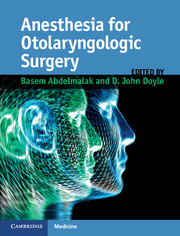
- Cited by 2
-
Cited byCrossref Citations
This Book has been cited by the following publications. This list is generated based on data provided by Crossref.
Azizi, Hosein Davtalab-Esmaeili, Elham Mirzapour, Mohammad Karimi, Golamali Rostampour, Mahdi and Mirzaei, Yagoob 2019. A Case-Control Study of Timely Control and Investigation of an Entamoeba Histolytica Outbreak by Primary Health Care in Idahluy-e Bozorg Village, Iran. International Journal of Epidemiologic Research, Vol. 6, Issue. 3, p. 120.
Li, Jingjie 2023. Anesthesia for Oral and Maxillofacial Surgery. p. 257.
- Publisher:
- Cambridge University Press
- Online publication date:
- November 2012
- Print publication year:
- 2012
- Online ISBN:
- 9781139088312


